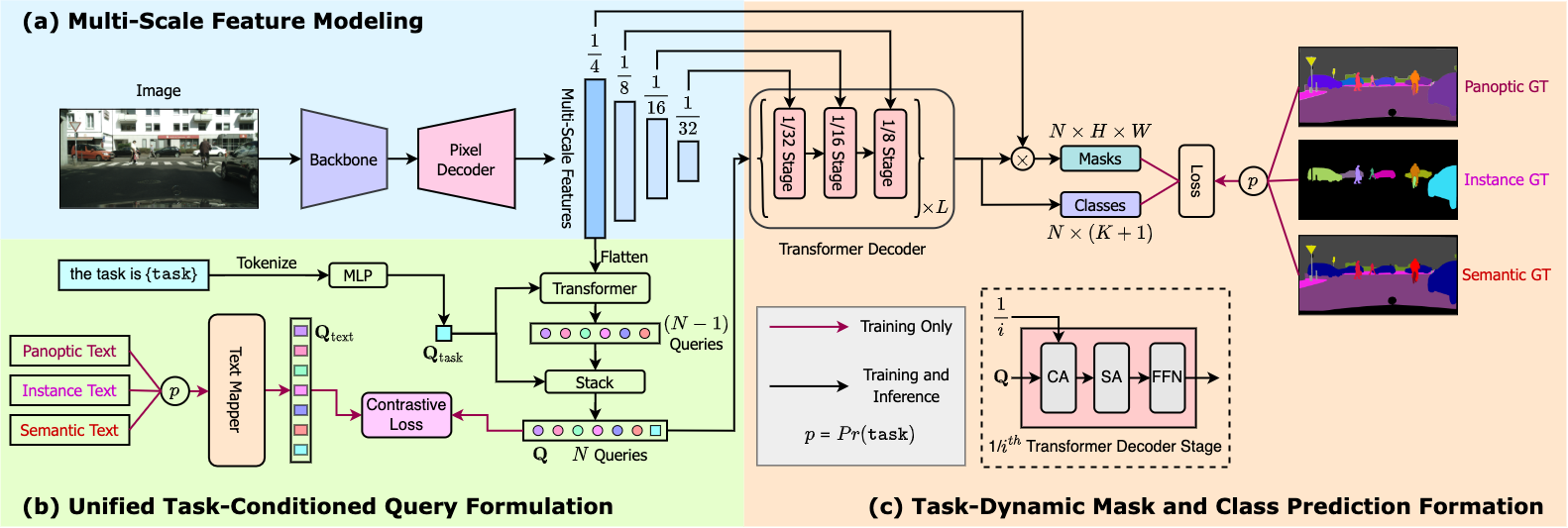File size: 3,694 Bytes
e78b0cc 2766341 e78b0cc 890231d 74628c0 890231d 89244c5 890231d 74628c0 890231d bbad99a 890231d bbad99a 890231d 4a5bac8 890231d 2f3362c bbad99a 890231d 4a5bac8 890231d 2f3362c bbad99a 890231d 4a5bac8 890231d 2f3362c bbad99a 890231d |
1 2 3 4 5 6 7 8 9 10 11 12 13 14 15 16 17 18 19 20 21 22 23 24 25 26 27 28 29 30 31 32 33 34 35 36 37 38 39 40 41 42 43 44 45 46 47 48 49 50 51 52 53 54 55 56 57 58 59 60 61 62 63 64 65 66 67 68 69 70 71 72 73 74 75 76 77 78 79 80 |
---
license: mit
tags:
- vision
- image-segmentation
- universal-image-segmentation
datasets:
- scene_parse_150
widget:
- src: https://praeclarumjj3.github.io/files/ade20k.jpeg
example_title: House
- src: https://praeclarumjj3.github.io/files/demo_2.jpg
example_title: Airplane
- src: https://praeclarumjj3.github.io/files/coco.jpeg
example_title: Person
---
# OneFormer
OneFormer model trained on the ADE20k dataset (large-sized version, Swin backbone). It was introduced in the paper [OneFormer: One Transformer to Rule Universal Image Segmentation](https://arxiv.org/abs/2211.06220) by Jain et al. and first released in [this repository](https://github.com/SHI-Labs/OneFormer).

## Model description
OneFormer is the first multi-task universal image segmentation framework. It needs to be trained only once with a single universal architecture, a single model, and on a single dataset, to outperform existing specialized models across semantic, instance, and panoptic segmentation tasks. OneFormer uses a task token to condition the model on the task in focus, making the architecture task-guided for training, and task-dynamic for inference, all with a single model.

## Intended uses & limitations
You can use this particular checkpoint for semantic, instance and panoptic segmentation. See the [model hub](https://huggingface.co/models?search=oneformer) to look for other fine-tuned versions on a different dataset.
### How to use
Here is how to use this model:
```python
from transformers import OneFormerProcessor, OneFormerForUniversalSegmentation
from PIL import Image
import requests
url = "https://huggingface.co/datasets/shi-labs/oneformer_demo/blob/main/ade20k.jpeg"
image = Image.open(requests.get(url, stream=True).raw)
# Loading a single model for all three tasks
processor = OneFormerProcessor.from_pretrained("shi-labs/oneformer_ade20k_swin_large")
model = OneFormerForUniversalSegmentation.from_pretrained("shi-labs/oneformer_ade20k_swin_large")
# Semantic Segmentation
semantic_inputs = processor(images=image, task_inputs=["semantic"], return_tensors="pt")
semantic_outputs = model(**semantic_inputs)
# pass through image_processor for postprocessing
predicted_semantic_map = processor.post_process_semantic_segmentation(outputs, target_sizes=[image.size[::-1]])[0]
# Instance Segmentation
instance_inputs = processor(images=image, task_inputs=["instance"], return_tensors="pt")
instance_outputs = model(**instance_inputs)
# pass through image_processor for postprocessing
predicted_instance_map = processor.post_process_instance_segmentation(outputs, target_sizes=[image.size[::-1]])[0]["segmentation"]
# Panoptic Segmentation
panoptic_inputs = processor(images=image, task_inputs=["panoptic"], return_tensors="pt")
panoptic_outputs = model(**panoptic_inputs)
# pass through image_processor for postprocessing
predicted_semantic_map = processor.post_process_panoptic_segmentation(outputs, target_sizes=[image.size[::-1]])[0]["segmentation"]
```
For more examples, please refer to the [documentation](https://huggingface.co/docs/transformers/master/en/model_doc/oneformer).
### Citation
```bibtex
@article{jain2022oneformer,
title={{OneFormer: One Transformer to Rule Universal Image Segmentation}},
author={Jitesh Jain and Jiachen Li and MangTik Chiu and Ali Hassani and Nikita Orlov and Humphrey Shi},
journal={arXiv},
year={2022}
}
```
|